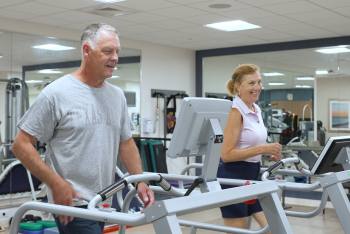Inspira Podiatrists share simple but often overlooked ways to care for your feet—from walking on the...
Read More
Corns can be a frustrating and painful experience, especially when they interfere with daily comfort and mobility. Whether they appear due to ill-fitting shoes, foot shape or repetitive pressure on specific areas, corns develop as a natural protective response from the skin.
Fortunately, you can reduce the discomfort corns cause and even prevent them from recurring. Here, we’ll explore proven methods for safely managing corns and maintaining healthy, pain-free feet.
“If a corn is relatively small and causes mild discomfort, gentle exfoliation can help soften thickened skin over time,” said Michael Calderone, D.P.M., D.A.B.P.M., C.W.S.P., a podiatrist at Inspira Medical Group Podiatry. “Using a pumice stone or foot file, gently rub the corn after soaking the foot in warm, soapy water for 10-15 minutes.” This process softens the skin and makes it easier to exfoliate without damaging sensitive areas. Avoid removing too much skin at once, as over-exfoliating can lead to irritation or worsen the problem.
Corns can develop if your shoes are too tight, too loose or have uncomfortable pressure points. Selecting well-fitting shoes with adequate padding can make a noticeable difference. Aim for shoes with a wider toe box to prevent excessive rubbing, and consider cushioning insoles or toe separators to minimize friction. By reducing the pressure on your feet, you may be able to alleviate existing corns and prevent new ones from forming.
Over-the-counter options like salicylic acid pads or ointments can help alleviate moderate corns. “Salicylic acid works by softening the corn and gradually breaking down the thickened skin,” said Dr. Calderone. “Follow the application instructions carefully and avoid applying the product to surrounding areas, as this can irritate the skin.” If you have sensitive skin or certain health conditions like diabetes, talk to a podiatrist before using these treatments to avoid potential complications.
Regularly inspect your feet for early signs of corns, including areas of thickened skin, and address any potential causes of friction. Moisturizing regularly, especially after exfoliating, can help maintain skin elasticity and reduce the risk of hard, uncomfortable spots forming. Additionally, be mindful of foot hygiene and care routines that keep your feet healthy and resilient to daily wear and tear.
“While you can often manage corns at home, some cases call for professional assistance—especially if you experience persistent pain, difficulty walking or signs of infection like redness, swelling or discharge,” said Dr. Calderone. “A podiatrist can evaluate your feet and recommend a treatment plan tailored to your needs, helping you regain comfort and mobility.”
During a consultation, your podiatrist can evaluate the root cause of your corns and recommend tailored solutions. They can also offer personalized guidance on footwear and daily care routines that support your long-term foot health. Seeking help from a specialist can make a meaningful difference in pain relief, allowing you to get back to everyday activities without ongoing discomfort.
A podiatrist can trim the corn with specialized tools, ensuring a safe and effective procedure that minimizes discomfort. For more persistent or recurring corns, your podiatrist may recommend custom orthotics to correct pressure distribution across the foot or suggest minor surgical interventions to address underlying bone or structural issues causing repeated irritation.
By investing time in regular care and seeking professional guidance, you can manage your corns and enjoy lasting comfort.
Inspira's podiatry program addresses and treats disorders of the foot and ankle to improve your overall well-being. Schedule an appointment with an Inspira podiatrist today.

Inspira Podiatrists share simple but often overlooked ways to care for your feet—from walking on the...
Read More
Crocs offer comfort, breathability and convenience but lack essential arch support and stability for...
Read More
Most people experience foot pain at some point in their lives, but it is important to know when to...
Read More